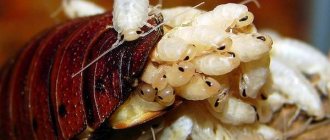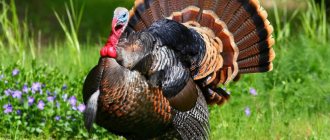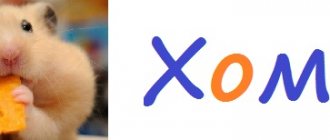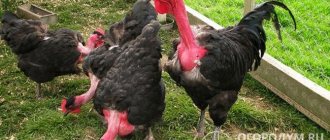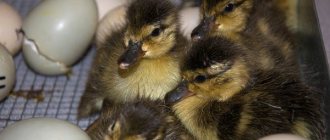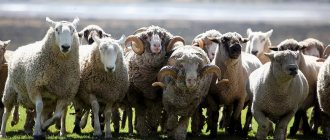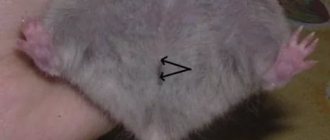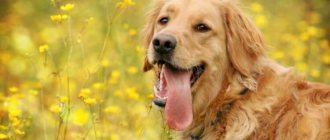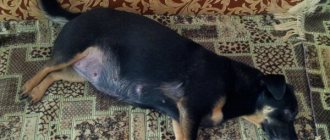Lovebirds are beautiful birds with bright plumage. At home, they are kept in twos, thereby facilitating the task of reproduction. Caring for lovebirds is easy, but during puberty and choosing a mate, some novice poultry farmers face certain difficulties that are worth knowing about (for example, how to breed lovebirds at home or how many days do female lovebirds hatch eggs).
How do parrots lay eggs?
Lovebirds reach puberty after six months, but it is not advisable for them to breed before reaching 10 months. A bird younger than this age often turns out to be a bad parent. Female lovebirds will be able to breed for up to four years, and males for up to six years.
It will be useful to know if it is possible to keep lovebirds alone.
Female lovebirds usually lay their first egg 7–10 days after mating; the next egg will be laid a day or two after the first. A full clutch consists of 4–7 eggs, and most females do not begin incubation until more than two eggs have been laid.
After all the eggs are in the nest, the female parrot sits on them to hatch. The male feeds the expectant mother at this time - he brings her food in his beak. Quite often, male lovebirds sit in the nest with a female.
Important! Young and inexperienced females sometimes lay eggs outside the nest box. This is not scary - the owner placing the egg in the box serves as a signal that other eggs should be placed in this place.
Matching
Lovebirds are called that because they form strong, indestructible families. But it is not always possible to choose two parrots that suit each other.
Condition of parrots
The union is formed by adults. Parrots ready to reproduce at home:
- must be physically healthy (you need to pass the recommended tests);
- behave actively, but not aggressively, walk, play with each other;
- not shy (if an individual reacts to the slightest rustle with panicked wing flapping and screaming, then it is not ready to reproduce);
- eat well;
- feathers are cleaned regularly (a disheveled, unkempt appearance is a sign of illness, including mental illness).
Parrots with physical disabilities are not allowed to breed. Families are also not allowed to form during the molt of one or both partners. Males and females begin to be allowed to approach each other to form a union after 1 month.
Size
Before breeding at home, birds are weighed and carefully palpated to detect excess weight or excessive thinness. A small layer of fat will not hurt, but if the parrot can barely move due to obesity, it should be immediately put on a diet of sprouted rice and fresh vegetables and fruits. There is no question of reproduction in this case. Only dense, but not fat birds are allowed to mate.
A malnourished individual is force-fed. A thin female will not be able to lay eggs.
Acceptable age
Mate birds at the age of 1-4 years. The last number is the dilution limit. Too young (under 1 year) can also form a pair for reproduction. But they officially reach sexual maturity at 8-9 months.
Independent choice
Parrots of this species are extremely picky when choosing a breeding pair. In order for the meeting to be successful and for the birds to accept each other, it is necessary to give them a choice, for example, placing two males and one female in one cage. After 1 week, a family is formed.
If there is no choice, the birds do not like each other too much, but do not behave aggressively, then they are first kept together as a pair, and after a specified time they are placed in different cages, left alone for 2 weeks. Usually loneliness forces lovebirds to come to terms with a person’s choice. But if after these actions everything remains at the same level, one of the individuals is still replaced.
Close family connections
Relatives do not usually form pairs in the animal kingdom. But breeders often cross brothers and sisters with each other in order to produce offspring with unusually bright plumage. This should not be done at home. The risk of obtaining non-viable or diseased offspring when mating relatives reaches its maximum.
Often in such a pair chicks are born with various physical defects. Such an attempt at reproduction usually costs the life of the female.
After how many days and how do lovebird chicks hatch?
The female will sit on the eggs for 21–27 days. Before the chicks hatch, they make a small crack or hole in the egg shell to allow oxygen inside. This not only improves breathing, but also indicates that chicks will start hatching within 12 to 24 hours.
Parents feed their children for two weeks after birth; after reaching this age, babies begin to feed themselves. Mature chicks leave the nest after 35–40 days.
Learn how to properly care for lovebirds.
Bird size
Individuals who are most well prepared for mating are well-fed, but not fat, mobile and active. Subcutaneous fat is very good only on the abdomen.
Skinny people are usually weak, and this does not depend on gender. Such a couple may not be able to withstand long incubation and the hassle of feeding children. Physiological development should be normal.
In the same way, choosing parrots with excess deposits is not a good choice. This extreme is no less dangerous. Such individuals do not like to nest. They are simply lazy or physically unable to do so due to disruption of the functioning of any internal organs.
It is worth paying attention to the size of the parrot
It must be admitted that this species has long been noted for its tendency to obesity. Even absolutely healthy birds are specially prepared for reproductive activity. For a whole week, lovebirds are fed rice porridge on the water, and they take long walks with flights to train the heart muscle and normalize weight.
Development by day
| Time range | Stages of development |
| 1 day | The chicks are born helpless, naked and blind. |
| 7–10 days | The chicks' eyes open. |
| 11–13 day | They are completely covered with fluff, and the rudiments of flight and tail feathers appear. |
| 17–18 day | The flight and tail feathers increase in size, and the stumps of the integumentary feathers appear. Birds become like hedgehogs. |
| 24–26 days | The flight and tail feathers grow almost completely, and the outer feathers continue to open. |
| 30 days | The body is completely covered with real feathers |
| 35–40 days | The chicks leave the nest box, fly independently, but are fed by their parents for another 14 days. |
Did you know? In Australia, parrots are causing damage to local providers by chewing through Internet cables.
Health: diseases and prevention
Small parrots are fragile, but at the same time very hardy birds. With good care for lovebirds at home, they hardly get sick and live a full life. However, the list of possible diseases in lovebirds is quite extensive: it includes viral infections, parasitic infestations, pathologies of internal organs and plumage.
Common diseases:
- salmonellosis;
- intestinal infection;
- conjunctivitis;
- goiter inflammation;
- unnatural shedding;
- ticks, feather eaters;
- obesity;
- tumors;
- gout, arthritis;
- helminthiasis
To prevent diseases, it is necessary to follow preventive measures:
- new birds are quarantined to avoid infection;
- regular cleaning of the cage, disinfection of equipment;
- fresh water in the drinking bowl, high-quality food in the feeder;
- additional fortification;
- day and night mode, maintaining lighting in winter.
You should carefully watch your pet when it flies around the room. It is necessary to secure the space as much as possible. It is easier to prevent trouble than to nurse a wounded, helpless parrot later.
What to feed lovebird chicks
As soon as the chicks are born, the poultry farmer should provide more nutritious foods for the parents, because they will feed the babies. The following types of food are mandatory in the diet:
- corn;
- greenery;
- seeds;
- apples;
- bananas;
- spinach;
- crushed eggshells.
Fresh water is also very important, so it needs to be replaced with fresh water frequently.
Chicks should not be given the following foods:
- chocolate;
- coffee;
- alcohol;
- avocado;
- salt;
- sugar.
Natural feeding
Within a couple of hours after birth, the chicks are able to eat. During the first week of life, the female herself provides the newborns with the food they need. During the first few feedings, she feeds them a clear liquid filled with nutrients and enzymes. This liquid will help the newborn's digestion. After this, the female will regurgitate her food to feed her children.
Did you know? Each eye of the parrot lives its own life and “gives” the owner an original picture. In science this is called monocular vision.
In the first few days, the male carries food to the female, and she eats herself and gives some chewed food to the chicks. In the second week of life, both the male and female feed the chicks.
How to feed yourself
Feeding parrots by hand is a labor-intensive, complex process.
What to feed
You can buy food for parrot chicks at pet stores. It provides the right combination of nutrients, vitamins and minerals that babies need. You can also prepare medium liquid semolina or millet porridge yourself. It is boiled in milk, and a little fish oil and sugar are added to the finished product. The little lovebird needs vitamins and minerals; store-bought food has it all, but homemade cereals need to be supplemented with grated vegetables, fruits, and eggshells ground into flour.
Purchased food should be diluted in accordance with the attached instructions. The result will be an opaque paste, the temperature of which should be moderately warm. If the food is hot, the chicks will be scalded, and cold food can cause colds and ultimately be fatal. The optimal food temperature is from +40 to +45°C. To accurately measure the temperature of the porridge, you can use a thermometer.
Important! A poultry farmer should never use a microwave oven when heating food for small parrots, as this can lead to uneven heating and in some places the food will be too hot, which can cause a burn to the chicks’ esophagus.
How to feed
- Food can be given to chicks on a plastic spoon with the edges curved inward (to do this, dip the end of a plastic teaspoon into boiling water, and then bend the edges inward - you get a small dispenser with a relatively narrow gap) or through a syringe with a wide nozzle. You can also buy a special syringe-spoon for feeding in pet stores.
- The syringe will allow you to accurately measure the amount of food and put food into the chick's open beak with relative ease. However, there is always a risk of choking, so using a feeding spoon is recommended once babies are old enough, around 10 days after birth. The spoon allows the chick to swallow food at its own pace, but does not do a very good job of simulating the flow of "burp" that it does after using a syringe.
- Whatever the feeding method, all feeding equipment should be sterilized before use and any uneaten food should be thrown away. You cannot cook large quantities of food and then refrigerate it - food should always be just mixed and heated.
- Placement of the chicks is also important when feeding; they should be placed on a terry towel or other soft object.
- You need to touch the chick's beak with a spoon or syringe with food, imitating the mother's movements - its mouth will open to eat food. The food mixture is served from the side, being 90 degrees from the front of the beak, this is how feeding occurs in parrots.
- When using a syringe, it is advisable not to squeeze all the food into the beak at once - the baby needs time to swallow the food, otherwise he can easily suffocate. To understand when it’s time to serve the next portion, you need to focus on the behavior of the chick. If the food has not yet been swallowed, the baby will close its beak and refuse to open it for the next sip of food. If the bird has not eaten its usual portion, there is no need to force feed it; perhaps, by the next meal, its appetite will resume. If the lack of appetite persists during subsequent feedings, you should seek veterinary help.
- The food will be digested in two to four hours, depending on the age of the chicks, and they will need subsequent feedings every three to four hours. The first sign of hunger in a chick is its beak wide open. Feeding parrots by hand is a full-time job, at first it is done at least 6 times a day.
- Small parrots grow quickly and the amount of food they eat also increases. Two weeks after hatching, depending on size, the chick will eat 2–4 ml of food at each feeding. After three weeks, the portion increases to 4-6 ml, at five weeks - to 5-8 ml.
Caring for the chicks becomes easier only after three weeks.
Little lovebirds now look like unkempt miniature dinosaurs, with cute patterned down feathers and poking out points of future flight and tail feathers, as well as emerging personalities and curiosity that will stay with them throughout their lives. At this age, they are fed every four hours, but babies need the care of a poultry farmer throughout the day. Did you know? Budgerigars can be taught to count to three. After training, they firmly remember that the world revolves strictly around these numbers. In other words, if a poultry farmer holds three treats in his hand, shows them to his pet, but gives only two, the parrot will be sure that he has been cheated.
After five weeks, you can begin to place food on the floor of the cage or in feeding bowls, this is necessary so that the chicks develop a natural instinct to search for food. After six or seven weeks, the parakeets will likely be independent. However, the poultry farmer needs to continue to monitor their feeding behavior. Some weak specimens may require hand feeding until they are seven weeks old.
Nest building
Lovebirds begin to build nests. During this period, they may have problems, since during the process of domestication, most of them partially lost their construction skills.
Based on this, birds can be divided into three groups: 1. Birds that enjoy construction. They do not encounter any significant problems during the process; they cope with their task quickly and just as quickly begin laying. 2. Those parrots who incorrectly fill the nest box with branches and, in the end, it turns out that there is no longer enough space for them. 3. And the last type is birds that lay down a number of branches that is too small for comfortable and proper laying.
If a couple cannot cope with construction, they should be helped.
How to care for chicks
In addition to feeding, small parakeets require warmth, which can be provided with a homemade thermostat. Hot, but not boiling, water is poured into a large plastic or glass bottle (3–5 liters).
A bottle of water is placed on its side in the box where the chicks will be placed, and wrapped in a soft cloth. Then the chicks are placed around the resulting heat source.
Did you know? In ancient Rome, it was believed that a talking parrot must pronounce the word
"
Caesar
"
.
To reliably retain heat, the box is closed with a lid. Under no circumstances should the box be closed hermetically; a hole with a diameter of 3–5 cm is cut out in the middle of the cardboard lid for air access. This hole should be directly above the heater bottle. As the water in the bottle cools, it is replaced with hot water.
As lovebird chicks grow older, the temperature in the nest decreases. Once the parrot's body is covered with feathers, the need for artificial heating disappears. We must not forget that a sharp decrease or increase in ambient temperature can negatively affect the health of the chick.
Optimal temperature for artificially heated chicks:
- from 1 to 10 days of life - about +30 °C;
- at the age of 15–20 days - from +20 to +25°C.
The nesting house should be chosen carefully.
The ideal nest is one that can be hung outside the cage, but with easy access for the birds inside to the children. You cannot use a nest box that hangs inside the cage. These boxes are used by parrots as nursing platforms and, as a result, become covered in feces. We recommend that you learn about how to properly breed Fischer's lovebirds.
Litter is important for nesting. It provides softness and warmth, preventing any growth deformations of the chicks. It is best if the bedding consists of cedar or pine shavings. Some bird keepers prefer to change the litter only after removing the chicks from the nest box from the female, but this may cause the mother to abandon the nest. If the bedding is changed, it is important to block the entrance hole to prevent the mother from entering the nest box.
It is necessary to temporarily move the chicks inside a spare warm box with a soft layer inside, then very quickly remove the old bedding and clean the nest box of droppings. When the nesting box is fresh, the chicks are carefully returned to their place and the entrance is uncorked so that the female can return to her duties.
Important! Drinkers and feeding bowls should not be stacked on top of each other as contaminated food and water can cause serious infections and illnesses.
When the chicks grow up, which will happen in a few weeks, they will begin to leave the nest. During this time they will explore their cage environment and try to fly. When the flying skill has developed sufficiently (and this happens at about the age of 8 weeks), the babies’ wings, mainly the flight feathers, are slightly trimmed.
Trimming the wings of parrots ensures that babies will not accidentally fly into an open door or window or injure themselves in a panic attack. The chicks are separated from their parents as soon as they become independent. If the babies are not removed, the mother may harm them due to her desire to return to the nest. To avoid unnecessary reproduction or female aggression, the nest box is removed from the cage until the following year.
Features of bird life
There are many types of lovebirds. All of them are united by a rather small height (from 10 to 17 cm) and motley plumage.
The main plumage of lovebirds is bright green. The head, neck and chest can be painted in all sorts of shades of pink, orange, scarlet, azure and other colors.
Poultry keepers should be aware that lovebirds cannot be trained like a cat or dog. In general, taming can take a long time. In the first few weeks after purchase, you need to minimize contact with the bird, since attempts to get closer may be assessed by the parrot as a serious threat to its life.
There are some features in care:
- Do not place the cage with the bird close to heating devices;
- drafts must be avoided to protect your pet from illness;
- lovebirds can show aggression towards other birds, this is especially noticeable during the breeding season, so it is advisable to keep only one pair of birds in one cage;
- Grain mixtures are quite suitable for nutrition, the composition of which can be varied with nuts, herbs, and pieces of fruit;
- Bird owners need to ensure thermal and light conditions, regularly ventilate the home, and maintain high humidity in the house.
Hard food
Lovebirds are unpretentious, but even among them there are individuals with quirks. Some parrots meticulously rummage through the feeder, choosing one or two types of grains. Those owners who have capricious charges are forced to take loose feed and mix it in the right proportion.
A dry mixture of various seeds and grains is the basis of the diet, its share is at least 60% of the total daily feed volume. Assorted grains for lovebirds may include the following cereals:
- Millet of different varieties is an important component. Of the total mass of feed consumed, white and red millet grains occupy almost half. It is not recommended to give peeled millet to parrots in its raw form: it oxidizes and becomes rancid;
- Oats are an ingredient valuable for their composition. It contains important amino acids and easily digestible proteins. Oatmeal, whole and crushed grains are suitable for feeding lovebirds;
- Sprouted wheat. Lovebirds eat dried grains last, when there is no other food left. Soft wheat sprouts are a tasty food for parrots, rich in proteins, carbohydrates and vitamins;
- Shredded corn. Large, fully ripened grains are of little use for small birds. Usually boiled ears of corn of milky ripeness are used. Parrots eat the sweetish yellow seeds with appetite, extracting them from the cells with their beaks;
- Flax-seed. It has an enveloping property and protects the digestive tract from damage. Volume - no more than a tenth of the total dry diet.
Attention! Oil-based foods - nuts, sunflowers, hemp - are very nutritious, as they contain a lot of fat. The daily menu of lovebirds should contain a minimal amount of these elements, compared to other cultures.
How long is the incubation period?
The clutch hatches from nineteen to twenty-six days. There is no need to disturb the birds at this time. For cleaning, it is advisable to catch the moment when the expectant mother goes out to eat. You should not clean your bird's home more than twice a week. Moreover, you cannot touch the eggs with your bare hands (or it is better not to touch them at all, since lovebirds can abandon them).
At the very beginning, you need to remove the unfertilized ones. Eggs with embryos are always an even white color, matte, while empty eggs are shiny, have spots and yellowness.
Sometimes it happens that there are no fertilized eggs at all. You should not knock the lovebird out of its cycle (i.e., remove it from its perch). Let it finish hatching on its own.
Store-bought feed
Pet stores sell various brands of grain food, and the owner can find the right mixture for his lovebird. When choosing, you need to look at the date of manufacture, integrity of the packaging, and shelf life. A cardboard box is not the best packaging option, as it does not guarantee the safety of the food. Vacuum bags with a zipper are convenient, they protect food from moisture and do not spoil for a long time. The preferred method of sealing is a double sealing method: the product is filled into a tight bag, which is placed in a box.
What not to give to your pet
If you want your lovebird to live as long as possible, make sure he never meets:
- cheese, cream, butter and sour cream,
- sauces and mayonnaise,
- hot peppers and eggplants,
- meat, fish and seafood,
- fruits in sugar,
- exotic fruits (mango, papaya, avocado, persimmon),
- pits of cherries, cherries, apricots, plums, peaches and nectarines, as well as apple seeds,
- oak branches, viburnum, coniferous, poplar, as well as pear, lilac and bird cherry,
- sorrel and rhubarb,
- mushrooms.
Be responsible when it comes to feeding your lovebirds. If your parrots receive complete and varied food, you do not overfeed them and always provide fresh water, they will delight you for a long time with their activity, bright plumage and sociability.
In this video, watch how to feed baby chicks:
No consanguineous ties
If the parrots come from the same brood, the owner will get many problems instead of healthy offspring. The clutches will be small, with empty, unfertilized eggs. Not all hatched chicks will survive, since very often they are marked with external and internal defects. Consanguineous relationships will not produce full-fledged lovebirds.
Usually they buy a young male, and when he gets used to the house and its inhabitants, they add a female to him. If you do it differently, starting with the acquisition of a future mother, then the bird will not allow any of the birds into its territory. Family won't work.
It is not advisable to crossbreed parrots of relatives
The male may also not accept the offered girlfriend, even peck her to death. Therefore, at first they are placed in different cages, which are placed next to each other. Time is a magician! Sooner or later they will meet and become friends.
Mineral supplements
During the period of active growth, when changing plumage, during nesting, lovebirds need increased nutrition. Regular food does not contain enough minerals; in addition, not all micro- and macroelements are properly absorbed. To compensate for the lack of nutrients, parrots need mineral supplements:
- sepia (cuttlefish shell);
- chalk;
- bone flour;
- organic sand;
- clay;
- nut and eggshells;
- slaked lime.
Pet stores sell a specially selected Rio mineral mixture for parrots, which includes components for the proper functioning of the digestive system. A hard mineral stone is fixed to the wall of the cage to make it easier for lovebirds to break off pieces.
Two houses
For a couple of lovebirds, two perches are equipped so that they can safely fly from one to another. There should be as much space as possible - from sixty centimeters both horizontally and vertically.
Remember, you cannot serve different foods from the same container. You need at least two sets for the grain mixture, wet food and drinking bowl. Change the water to fresh water daily and check the containers carefully. Perhaps there is only husks instead of food, and the water is polluted.
Juicy feed
Although parrots love to peck grain and shell seeds, such food quickly becomes boring. What else to feed a lovebird besides cereals? Raw vegetables, fruits, and herbs are suitable as a tasty and healthy addition. Fruits and herbs contain up to 90% water and have a refreshing effect. In addition to life-giving moisture, they contain vitamins, minerals, and organic acids.
Fruits that are allowed to feed lovebirds:
- apples, pears - along with seeds;
- citrus fruits - with peel;
- melons (melon, watermelon, pumpkin);
- cucumbers - slices or long halves;
- tomatoes - only ripe ones, green ones contain toxins;
- carrots – raw, grated;
- turnip – cut into pieces;
- white cabbage - leaves and stalk.
The products listed are available throughout the year. In addition to the usual fruits, which are well preserved, parrots also eat seasonal fruits: plums, peaches, apricots, and zucchini. Boiled vegetables are not prohibited, but they must be unsalted. Berries are a favorite bird treat and should be given fresh. If the treat is dried or stored in the freezer, it needs to be soaked or thawed.
Juicy greens are essential in the diet of lovebirds. It serves as a kind of seasoning for the main menu, improves digestion, without it the food is not as tasty. Herbs are also full of useful microelements and other substances: vitamins, essential oils, vegetable protein, phytoncides. Parrots equally love both garden and weed grass: nettles, dandelions, dill, parsley, and root crop tops. Also suitable are twigs from which birds tear off the thin bark and swallow the delicate fibers. Young shoots of bushes and trees should be collected away from highways. Before use, the greens and branches are washed, but not dried.
Daily norm
In order for the bird’s nutrition to be correct and balanced, it is important to maintain proportions. An adult lovebird needs two to three tablespoons of dry grain per day. If parrots eat wet food well, it can be given without restrictions, but alternate types of fruits every day. For example, today offer your pet a quarter of an apple, tomorrow grate raw carrots, then fresh berries.
On days when the lovebird receives protein food, the amount of succulent food should be reduced. Let the greens be present in the cage every day, but they must be fresh, without signs of spoilage. Wet foods should not be left overnight; before going to bed, they are removed and grain is poured into the feeder. The bird wakes up hungry, it needs to peck something right away.
Setting a Feeding Schedule
Now in proportions about what to feed lovebirds. One tablespoon (fourteen milliliters) of food daily is enough for one lovebird. Seventy percent of the diet should be pellet food. The remaining thirty% is a combination of various vegetables and fruits.
Try to feed your lovebirds at the same time every day. Then they will get used to feeding time.
Drink
A necessary condition for keeping parrots is that there should always be fresh water in the drinking bowl. Lovebirds can be given bottled or filtered water at room temperature. Plain tap water is quite suitable for parrots, but it must first be soaked until the chlorine evaporates. Boiled water should not be offered to a parrot, since when heated, its structure changes and some of the beneficial properties disappear.
For illnesses, lovebirds are advised to drink herbal tea - a drink that relieves inflammation and calms the nervous system. For infusions you can use dry chamomile and rose hips.
Important: Any liquid must be poured into a clean drinking bowl. When cleaning is done poorly, pathogenic microorganisms appear in containers.
Arrangement of the nest
Usually the nesting house looks like a birdhouse. This is a small tower up to a quarter meter high. For the bottom, use plywood 17x18 centimeters. The entrance (entry and exit openings) should not be large - up to 6 cm in diameter with a small perch under it for comfortable sitting of lovebirds. The most convenient way is to have a hinged lid, so that you can do a thorough cleaning of the bird’s house at any time. They line the entire bottom with twigs from which the female will build a nest. Be sure to pour boiling water over them to disinfect them, as well as to soften them and make them flexible.
Lovebirds in an aviary
It is not recommended to use sawdust: eggs drown in it, which is why parrots refuse to hatch them. Paper is also not practical enough for this purpose: it tears into strips easily, making the nest light. Also, we must not forget that future parents may sometimes defecate there. The paper becomes limp, and therefore the entire structure collapses.
